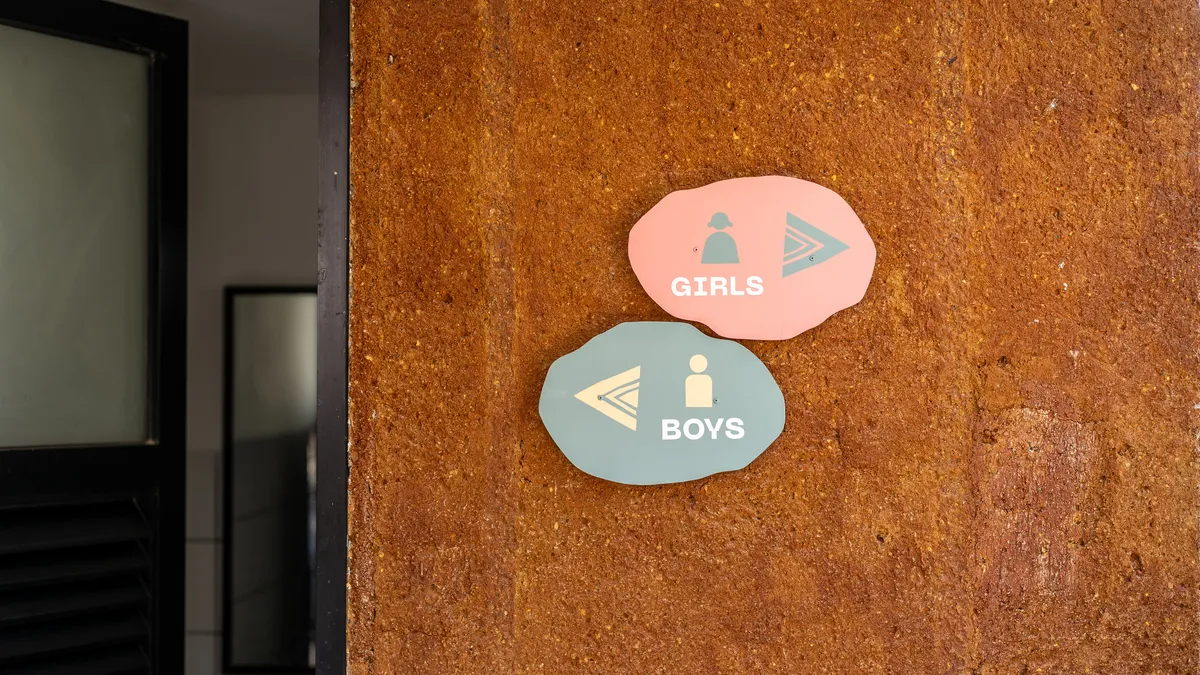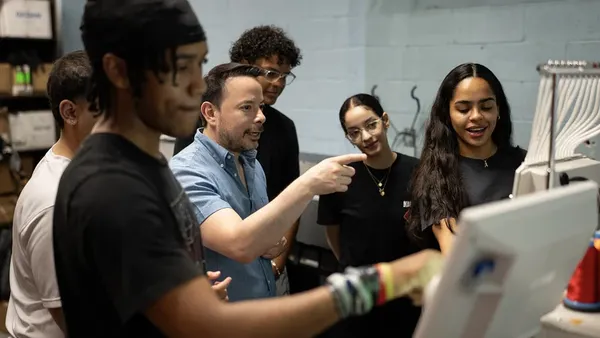Dive Brief:
- Recognizing different family structures will make all parents and students feel welcome at school, Jeremy Majeski, an elementary school principal at the American School of Barcelona, writes for Edutopia.
- Majeski writes most schools operate under heteronormative cultures, but schools can modify paperwork to allow parents to identify who they are in relation to their student through drop-down menus or blank spaces, rather than cells for just "mother" and "father." Additionally, school-wide events should be organized to include all types of parent combinations.
- Word choices and body language convey acceptance, as well. Professional development can help teachers and staff members feel more comfortable addressing LBGTQ parents.
Dive Insight:
The first step in developing an LBGTQ-friendly school is to provide diversity trainings, such as those outline in the Gay, Lesbian and Straight Education Network resource "Tackling Gay Issues in School." Displaying pro-gay signs and symbols can also portray acceptance.
Gay Pride week can be recognized along with Black, Hispanic and Women’s History months, and the formation of gay-straight alliance groups further support that effort. Though there may be some resistance, the primary focus is on creating a harassment-free environment without homophobia and other forms of discrimination.
Cultivating inclusion for students of all backgrounds starts with taking a proactive approach to diversity. This can be facilitated by creating a culture of acceptance and adding classroom activities that support diverse worldviews, such as highlighting different cultural perspectives during a history lesson. In the long run, these efforts benefit all students, as those who attend schools with diverse populations develop an appreciation for other cultures and backgrounds.
Conversations about race, sexual orientation and religious backgrounds can often be uncomfortable, but are also crucial. Avoiding the topics don’t make them go away, and creating space for difficult talks allows unity to build and healing to happen. Educators can also encourage students to seek out the experiences of others in their own community.
Reaching out to families from different cultures and backgrounds will also deepen school-family relationships and allow more information to be shared.





 Dive Awards
Dive Awards






